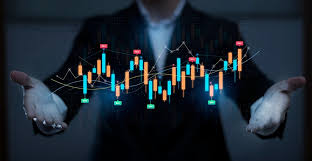

Understanding Forex Trading: A Comprehensive Definition
Forex trading, also known as foreign exchange trading or currency trading, is the process of buying and selling currencies in the foreign exchange market with the aim of making a profit. This market is the largest and most liquid financial market in the world, where currencies are traded in pairs, such as EUR/USD or GBP/JPY. A crucial starting point for anyone interested in entering the forex trading arena is to understand what forex trading actually means. For those looking to engage in forex trading, exploring the forex trading definition Best Platforms for Trading is vital for understanding how to execute trades effectively.
The Basics of Forex Trading
Forex trading operates 24 hours a day, five days a week, across major financial centers around the globe, including London, New York, Tokyo, and Sydney. Because of its decentralized nature, forex trading does not have a centralized exchange; instead, it relies on a network of banks, brokers, and market makers to facilitate transactions.
How Currency Pairs Work
In forex trading, currencies are quoted in pairs. The first currency in a pair is known as the base currency, while the second is referred to as the quote currency. For example, in the EUR/USD pair, the euro (EUR) is the base currency and the US dollar (USD) is the quote currency. The exchange rate indicates how much of the quote currency is needed to purchase one unit of the base currency. If the EUR/USD exchange rate is 1.20, it means 1 euro can be exchanged for 1.20 US dollars.
Types of Forex Orders
There are several types of orders that traders can use when executing forex trades, including:
- Market Order: An order to buy or sell a currency pair at the current market price.
- Limit Order: An order to buy or sell a currency pair at a specified price or better.
- Stop-Loss Order: An order to sell a currency pair when it reaches a specified price, limiting potential losses.
- Take-Profit Order: An order to close a position when a currency pair reaches a specified profit level.
Key Players in Forex Trading
The forex market includes a variety of participants, each playing a unique role:
- Central Banks: National banks that manage their country’s currency value and inflation and intervene in the forex market to stabilize or increase the value of their currency.
- Commercial Banks: Large entities that facilitate financial transactions for clients and conduct proprietary trading.
- Brokers: Firms that provide platforms for retail traders to access the forex market.
- Retail Traders: Individual traders who trade with their personal money, aiming to earn profits from currency fluctuations.
Understanding Leverage and Margin
One of the key features of forex trading is the concept of leverage, which allows traders to control larger positions with a smaller amount of capital. For example, with a leverage of 100:1, a trader can control a position of $100,000 with only $1,000 in their trading account. While leverage can amplify profits, it also increases the risk of significant losses.

Margin is the capital required to open a leveraged position. Traders are required to maintain a minimum margin level in their accounts to keep their positions open. If the account balance falls below this level, the broker may issue a margin call, requiring the trader to deposit additional funds or close positions to avoid further losses.
Technical and Fundamental Analysis
Successful forex trading often requires the implementation of both technical analysis and fundamental analysis.
Technical Analysis
This approach involves analyzing price charts and identifying patterns or trends. Traders use various tools such as indicators (like moving averages or RSI) to help forecast future price movements based on past data. Technical analysis is based on the idea that all available information is already reflected in the price, and history tends to repeat itself.
Fundamental Analysis
Conversely, fundamental analysis involves studying economic indicators, political events, and other factors that may impact currency values. Economic reports such as GDP growth, employment data, and interest rate changes are critical elements considered by traders to understand the broader economic landscape that affects currency fluctuations.
Risk Management in Forex Trading
Risk management is crucial for any trader to minimize potential losses. Strategies may include:
- Setting Stop-Loss Orders: To automatically close positions at a predetermined level to manage losses.
- Position Sizing: Determining the amount of capital to allocate to each trade based on the overall trading strategy and risk tolerance.
- Diversifying Trades: Spreading investments across different currency pairs to reduce risk exposure from a single position.
Conclusion: Challenges and Opportunities
Forex trading is not only about understanding currency pairs and market dynamics; it involves a significant amount of knowledge and skill to navigate successfully. It offers opportunities for profit but comes with risks that require careful consideration and risk management strategies. For those starting their journey in forex trading, having a clear grasp of its definition and the key concepts involved is essential.
By combining technical and fundamental analysis, employing prudent risk management techniques, and continuously educating oneself, traders can increase their chances of success in the fast-paced and ever-evolving forex market.





















